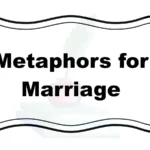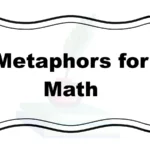Finding the right words to express yourself can truly make a difference in how your message is received. Especially when talking about something as relatable and universal as the head—whether literally or figuratively—choosing warm and thoughtful similes helps communicate your ideas with clarity and empathy.
Using similes not only paints a vivid picture but also adds a layer of personal connection, making your words more engaging and meaningful. Whether you’re writing creatively, explaining concepts, or simply having a heartfelt conversation, having a collection of expressive similes for “head” can enrich your language and bring your thoughts to life.
What Does “Head” Mean?
The word “head” can mean several things depending on the context. Literally, it refers to the upper part of the human body that houses the brain, eyes, ears, nose, and mouth. Figuratively, “head” often symbolises intelligence, leadership, or the centre of thought and decision-making.
It’s a powerful word used in many expressions, and understanding its multiple layers of meaning helps you use similes for “head” more effectively in both everyday conversation and creative writing.
When to Use “Head” Similes
Similes for “head” are useful in various situations—when describing physical features, expressing intelligence or mental states, or painting vivid imagery in stories. They work well in casual talks, educational materials, poetry, and even humorous exchanges. Using similes can soften a critique, add humor, or deepen empathy, making your communication more engaging and relatable. When you want to be thoughtful and caring in how you describe someone’s head or mental state, similes offer a gentle and imaginative alternative.
Pros and Cons of Using Similes for “Head”
Pros:
- Adds vivid imagery that captures attention.
- Helps express abstract ideas in relatable ways.
- Makes descriptions more engaging and memorable.
- Enhances emotional connection with the listener or reader.
Cons:
- Can sometimes be misunderstood if too obscure.
- Overuse might make writing feel forced or cliché.
- Needs context to avoid confusion or unintended offense.
1. Like a Lightbulb
Definition: This simile compares the head or brain to a lightbulb, symbolizing brightness or ideas.
Explanation: Just as a lightbulb shines brightly, this simile suggests someone is thinking clearly or has had a bright idea.
Example Scenario: “When she finally solved the problem, a lightbulb went off in her head.”
Best Use: To describe sudden inspiration or clarity.
Tone: Positive, optimistic, encouraging.
Other Ways to Say It:
- Like a spark
- Like a flash of lightning
- Like a glowing ember
2. Like a Hard Hat
Definition: Compares the head to a protective hard hat.
Explanation: Emphasizes the head’s role in protection and toughness.
Example Scenario: “He banged his head but it was like a hard hat—no damage at all.”
Best Use: To highlight resilience or durability.
Tone: Informal, reassuring.
Other Ways to Say It:
- Like a helmet
- Like a fortress
- Like a shield
3. Like a Bowling Ball
Definition: Likens the head’s shape or hardness to a bowling ball.
Explanation: Sometimes used humorously to comment on roundness or toughness.
Example Scenario: “After the fall, his head felt like a bowling ball rolling on the floor.”
Best Use: Humorous or descriptive physical imagery.
Tone: Light-hearted, playful.
Other Ways to Say It:
- Like a cannonball
- Like a beach ball
- Like a boulder
4. Like a Lighthouse
Definition: Compares the head to a lighthouse.
Explanation: Suggests the head guides thoughts or decisions like a lighthouse guides ships.
Example Scenario: “Her head was like a lighthouse, shining wisdom in the dark moments.”
Best Use: To describe guidance and clarity of thought.
Tone: Warm, respectful, admiring.
Other Ways to Say It:
- Like a beacon
- Like a compass
- Like a guiding star
5. Like a Vault
Definition: Compares the head to a vault or safe.
Explanation: Suggests the mind is secure and holds valuable information.
Example Scenario: “His head is like a vault; secrets are well-guarded.”
Best Use: To describe memory or discretion.
Tone: Trustworthy, respectful.
Other Ways to Say It:
- Like a safe
- Like a strongbox
- Like a treasure chest
6. Like a Balloon
Definition: Likens the head to a balloon.
Explanation: Can imply lightness or being full of hot air (humorously).
Example Scenario: “Her head was like a balloon—floating with ideas and dreams.”
Best Use: Poetic or humorous.
Tone: Gentle, whimsical.
Other Ways to Say It:
- Like a bubble
- Like a kite
- Like a cloud
7. Like a Machine
Definition: Compares the head to a machine.
Explanation: Highlights efficiency, precision, or being hard at work.
Example Scenario: “His head worked like a machine, processing information quickly.”
Best Use: To describe mental focus or efficiency.
Tone: Neutral to positive.
Other Ways to Say It:
- Like a computer
- Like an engine
- Like a robot
8. Like a Fortress
Definition: Compares the head to a fortress.
Explanation: Emphasizes strength and protection.
Example Scenario: “Her head was like a fortress, protecting her from negativity.”
Best Use: To express mental toughness.
Tone: Strong, respectful.
Other Ways to Say It:
- Like a castle
- Like a bastion
- Like a citadel
9. Like a Drum
Definition: Compares the head to a drum.
Explanation: Can suggest a rhythmic heartbeat or even loud thoughts.
Example Scenario: “His head felt like a drum, pounding with excitement.”
Best Use: Describing stress or anticipation.
Tone: Energetic, intense.
Other Ways to Say It:
- Like a heart
- Like a bass
- Like a timpani
10. Like a Library
Definition: Compares the head to a library.
Explanation: Suggests the mind is full of knowledge and information.
Example Scenario: “Her head was like a library, filled with facts and stories.”
Best Use: To highlight intelligence or memory.
Tone: Respectful, admiring.
Other Ways to Say It:
- Like a database
- Like a bookshop
- Like an archive
11. Like a Sponge
Definition: Compares the head to a sponge.
Explanation: Implies absorbing information quickly.
Example Scenario: “He soaked up the lessons like a sponge.”
Best Use: Describing learning ability.
Tone: Positive, encouraging.
Other Ways to Say It:
- Like a vacuum
- Like a magnet
- Like a tape recorder
12. Like a Helmet
Definition: Compares the head to a helmet.
Explanation: Focuses on protection and safety.
Example Scenario: “Keep your head like a helmet when playing sports.”
Best Use: Warning or advice tone.
Tone: Cautious, protective.
Other Ways to Say It:
- Like a hard hat
- Like armor
- Like a cap
13. Like a Computer
Definition: Compares the head to a computer.
Explanation: Implies logical processing or storing data.
Example Scenario: “Her head processed the math problems like a computer.”
Best Use: Describing intellect or technical skill.
Tone: Neutral, factual.
Other Ways to Say It:
- Like a calculator
- Like a server
- Like a CPU
14. Like a Box
Definition: Compares the head to a box.
Explanation: Could mean containing thoughts or feeling confined.
Example Scenario: “His head felt like a box, full but tight.”
Best Use: Expressing containment or limitation.
Tone: Thoughtful, sometimes melancholic.
Other Ways to Say It:
- Like a chest
- Like a container
- Like a crate
15. Like a Globe
Definition: Compares the head to a globe.
Explanation: Suggests broad perspective or worldliness.
Example Scenario: “Her head was like a globe, full of diverse ideas.”
Best Use: Describing openness or knowledge.
Tone: Admirative, broad-minded.
Other Ways to Say It:
- Like a sphere
- Like a planet
- Like a world
16. Like a Vault Door
Definition: Compares the head or mind to a vault door.
Explanation: Implies being closed off or secretive.
Example Scenario: “His thoughts were like a vault door—hard to open.”
Best Use: Describing secrecy or privacy.
Tone: Reserved, mysterious.
Other Ways to Say It:
- Like a locked safe
- Like an iron gate
- Like a steel door
17. Like a Canvas
Definition: Compares the head to a canvas.
Explanation: Suggests creativity and openness to new ideas.
Example Scenario: “Her head was like a blank canvas, ready for inspiration.”
Best Use: Describing creativity or learning.
Tone: Optimistic, creative.
Other Ways to Say It:
- Like paper
- Like a sketchbook
- Like a palette
18. Like a Box of Tools
Definition: Compares the head to a box of tools.
Explanation: Suggests resourcefulness and practical skills.
Example Scenario: “His head was like a box of tools—ready to fix any problem.”
Best Use: Highlighting problem-solving ability.
Tone: Practical, confident.
Other Ways to Say It:
- Like a Swiss army knife
- Like a toolkit
- Like a workshop
19. Like a Nest
Definition: Compares the head to a nest.
Explanation: Implies safety, comfort, and a place for ideas to grow.
Example Scenario: “Her head was like a nest, nurturing new thoughts.”
Best Use: To express care and growth.
Tone: Gentle, nurturing.
Other Ways to Say It:
- Like a cocoon
- Like a home
- Like a cradle
20. Like a Storm
Definition: Compares the head to a storm.
Explanation: Suggests turmoil, confusion, or emotional upheaval.
Example Scenario: “His head was like a storm, swirling with anxiety.”
Best Use: Describing mental stress or conflict.
Tone: Intense, dramatic.
Other Ways to Say It:
- Like a hurricane
- Like a tornado
- Like a tempest
21. Like a Jewel Box
Definition: Compares the head to a jewel box.
Explanation: Implies precious ideas or memories stored inside.
Example Scenario: “Her head was like a jewel box, filled with cherished memories.”
Best Use: Highlighting value of thoughts or experiences.
Tone: Warm, affectionate.
Other Ways to Say It:
- Like a treasure chest
- Like a jewelry case
- Like a safe
22. Like a Clock
Definition: Compares the head to a clock.
Explanation: Suggests precision, timing, or routine.
Example Scenario: “His head worked like a clock, always on schedule.”
Best Use: Describing punctuality or mental precision.
Tone: Neutral, factual.
Other Ways to Say It:
- Like a watch
- Like a timer
- Like a metronome
23. Like a Magnet
Definition: Compares the head to a magnet.
Explanation: Suggests attraction to ideas or people.
Example Scenario: “Her head was like a magnet, drawing in new knowledge.”
Best Use: Describing curiosity or social appeal.
Tone: Positive, engaging.
Other Ways to Say It:
- Like a vacuum
- Like glue
- Like a pull
24. Like a Maze
Definition: Compares the head to a maze.
Explanation: Implies complexity or confusion.
Example Scenario: “His thoughts were like a maze, hard to navigate.”
Best Use: Describing puzzling or complicated thinking.
Tone: Thoughtful, sometimes frustrated.
Other Ways to Say It:
- Like a labyrinth
- Like a puzzle
- Like a web
25. Like a Lantern
Definition: Compares the head to a lantern.
Explanation: Suggests illumination and guidance.
Example Scenario: “Her head was like a lantern, lighting the way for others.”
Best Use: To describe wisdom and insight.
Tone: Warm, inspiring.
Other Ways to Say It:
- Like a torch
- Like a candle
- Like a beacon
Conclusion:
The head, both literally and figuratively, is a powerful symbol of thought, identity, and protection. Using similes to describe it helps us communicate complex ideas with warmth and clarity. From the brightness of a lightbulb to the protective strength of a fortress, these similes open doors to creative and empathetic expression. They allow us to paint pictures with words that resonate deeply, whether in everyday chats, writing, or teaching. Next time you want to describe someone’s head, mind, or thoughts, try one of these similes to make your message feel personal and meaningful.
MCQs:
1. Which simile best describes sudden inspiration?
a) Like a drum
b) Like a lightbulb
c) Like a fortress
d) Like a maze
2. What does “like a sponge” imply about the head?
a) Protection
b) Absorbing information
c) Being closed off
d) Confusion
3. Which simile suggests mental toughness?
a) Like a balloon
b) Like a fortress
c) Like a lantern
d) Like a maze
4. “His head was like a vault” means:
a) He is secretive
b) He is inspired
c) He is confused
d) He is nurturing
5. Which simile would be best for describing someone’s broad perspective?
a) Like a globe
b) Like a drum
c) Like a balloon
d) Like a box
6. “Like a hard hat” emphasizes:
a) Intelligence
b) Protection
c) Creativity
d) Confusion
7. Which simile could imply a head full of hot air humorously?
a) Like a balloon
b) Like a drum
c) Like a fortress
d) Like a vault door
8. “Like a maze” in reference to the head means:
a) Clear thinking
b) Complexity or confusion
c) Strength
d) Lightness
9. Which simile suggests a resourceful and practical mind?
a) Like a box of tools
b) Like a globe
c) Like a balloon
d) Like a drum
10. “Her head was like a library” implies:
a) She is full of knowledge
b) She is confused
c) She is secretive
d) She is nurturing
11. Which simile is best to describe guidance and clarity?
a) Like a lighthouse
b) Like a balloon
c) Like a vault
d) Like a maze
12. What tone does “like a drum” usually carry?
a) Calm
b) Energetic or intense
c) Reserved
d) Optimistic
13. Which simile describes a head that is creative and open?
a) Like a vault door
b) Like a canvas
c) Like a box
d) Like a maze
14. “Like a magnet” describes a head that is:
a) Protective
b) Confused
c) Attracted to ideas
d) Full of secrets
15. Which simile could be used to describe punctuality or mental precision?
a) Like a clock
b) Like a fortress
c) Like a balloon
d) Like a nest
Answers:
- b) Like a lightbulb
- b) Absorbing information
- b) Like a fortress
- a) He is secretive
- a) Like a globe
- b) Protection
- a) Like a balloon
- b) Complexity or confusion
- a) Like a box of tools
- a) She is full of knowledge
- a) Like a lighthouse
- b) Energetic or intense
- b) Like a canvas
- c) Attracted to ideas
- a) Like a clock
FAQs:
1. Why use similes to describe the “head”?
Similes help make abstract or common ideas more vivid and relatable. When describing the head, similes can express emotions, thoughts, physical features, or mental states in a way that feels creative, empathetic, and often more memorable than literal descriptions.
2. Are similes appropriate in formal writing or just creative work?
Similes can be used in both formal and creative writing, but it’s essential to match the tone. In formal writing, choose similes that are clear and respectful (e.g., “Her mind was like a library”). In creative writing, you can be more imaginative or humorous (e.g., “His head was like a balloon”).
3. How do I choose the right simile for a specific situation?
Consider the tone, message, and context of your communication. If you’re complimenting someone’s intelligence, something like “like a computer” or “like a library” works best. For humor, “like a bowling ball” might suit. If you want to show care, try “like a lantern” or “like a nest.”
4. Can similes for “head” be used in speeches or presentations?
Absolutely. Similes make your language more engaging and relatable in spoken formats. They help paint pictures in the listener’s mind and make complex ideas easier to understand. Just be sure the simile aligns with your audience’s familiarity and the topic’s tone.
5. What’s the difference between a metaphor and a simile for the head?
A simile uses comparison words like “like” or “as” (e.g., “His head was like a fortress”), while a metaphor states something is something else (e.g., “His head is a fortress”). Similes tend to be more accessible and gentle, which is why they’re often preferred in empathetic or conversational writing.




